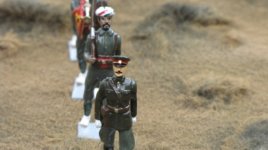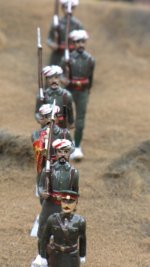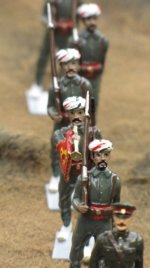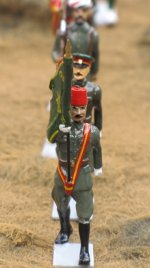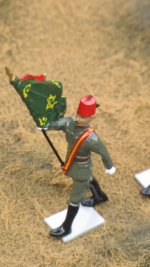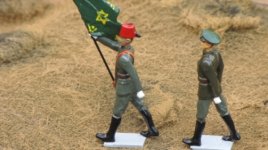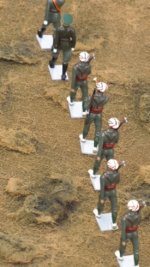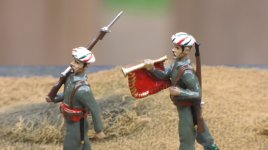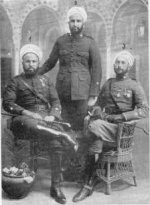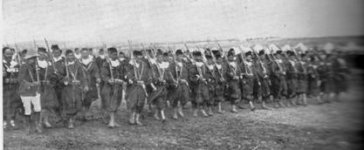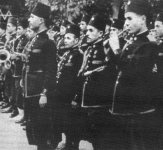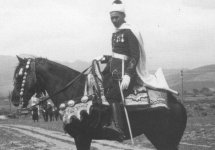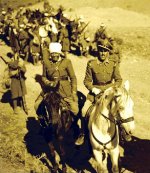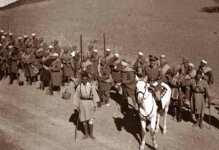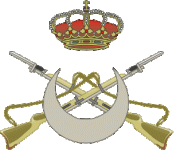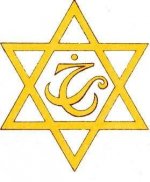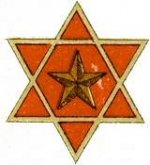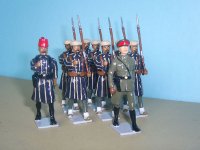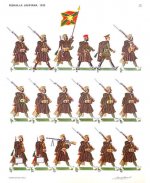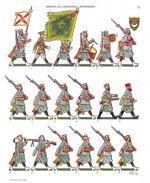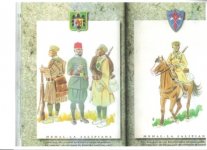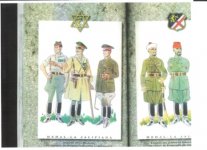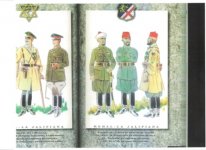jazzeum
Four Star General
- Joined
- Apr 23, 2005
- Messages
- 38,439
I recently purchased from Mike Tarantino (ucla1967) a few of the Hiriart Spanish Civil War sets. One of these was the Meal-la Jalifiana. Pictures of the set accompany this thread.
Now, some of you may ask what was the Mehal. Mehal la Jalifiana (literally the Caliph’s regiment) was part of the Spanish Army of Africa and involved in the Spanish Civil War on the Nationalist (Francoist) side. The Mehal was created in 1913 as an honor or prize to the Sultan’s representative, the Jalifa (Caliph). Each Mehal consisted of two infantry tabores (batallions) of about 300 men each, with one or two companies and 110 askaris in each of them. They were considered native shock troops. Generally, they were feared (and hated) by the Republican populace. They were envolved in the decisive Battle of the Ebro in resisting the attacking Republican forces.
The official uniform was green-gray, black boots, leather strap and peaked cap with red and emerald green. The troops wore the typical head turban or "sheshia", a red cap without a visor on a rounded cap.
After the military revolted in July 1936, the Caliph Moulay Hassan decided to support the rebellion and provided volunteers to the Nationalist cause.
The Mehal, as well as the remainder of the Army of Africa, were flown over to Spain in October 1936 by German and Italian forces once the Nationalists were in control of Spanish Morrocco and the crossings to Spain. Initially, there were fifteen batallions consisting of approximately 5,400 troops out of approximately 34,000 in the Army of Africa.
I'm also attaching some photos of the actual troops although not necessarily in action in Spain.
Now, some of you may ask what was the Mehal. Mehal la Jalifiana (literally the Caliph’s regiment) was part of the Spanish Army of Africa and involved in the Spanish Civil War on the Nationalist (Francoist) side. The Mehal was created in 1913 as an honor or prize to the Sultan’s representative, the Jalifa (Caliph). Each Mehal consisted of two infantry tabores (batallions) of about 300 men each, with one or two companies and 110 askaris in each of them. They were considered native shock troops. Generally, they were feared (and hated) by the Republican populace. They were envolved in the decisive Battle of the Ebro in resisting the attacking Republican forces.
The official uniform was green-gray, black boots, leather strap and peaked cap with red and emerald green. The troops wore the typical head turban or "sheshia", a red cap without a visor on a rounded cap.
After the military revolted in July 1936, the Caliph Moulay Hassan decided to support the rebellion and provided volunteers to the Nationalist cause.
The Mehal, as well as the remainder of the Army of Africa, were flown over to Spain in October 1936 by German and Italian forces once the Nationalists were in control of Spanish Morrocco and the crossings to Spain. Initially, there were fifteen batallions consisting of approximately 5,400 troops out of approximately 34,000 in the Army of Africa.
I'm also attaching some photos of the actual troops although not necessarily in action in Spain.


